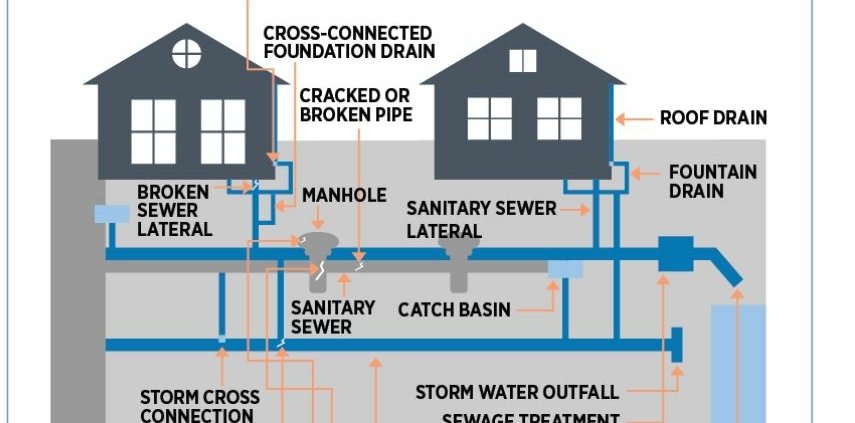What causes a sewer line backup?
Having a sewer line backup into the home or business is a costly, nasty experience that damages property and disrupts life. But what causes a sewer line backup?
Your drain lines are out of sight and out of mind for years and then one day you wake up and there is a pool of water in the house. Sometimes all you find is the water stains and debris left behind after a slow drain backed up and then continued to drain overnight. Backups can come from a number of issues from a belly that built up with debris over time to a collapsed line that will need replacement.
Eggshells, grease and other items that are not easily water soluble and degradable can stick in the various joints or cracks in a line. Offset pipes that do not perfectly line up can also create little lips that catch debris. Once debris sticks, other debris builds up behind it creating a larger blockage over time.
Tree roots is another source of blockage. Sewer lines are a terrific source of nutrients for vegetation and if they can get their roots into the sewer line, those roots grow quickly.
Breaks in the line also happen over time. Rusting iron pipes, shifting soil, connections to the public main that are under roadways with heavy traffic… Backup’s happen, it’s a part of home ownership.
Knowing the condition and material make-up of the various sections of the line before you buy a home can help you negotiate current needed repairs or understand what you will need to help maintain that line over time.
Sewer lateral line pipes have been created from a number of different materials over the years.
- PVC, ABS, and HDPE (lifespan of 50-100 years) are the most common type of sewer lateral line materials installed over the past 20 years. The most common defects found in these pipes are: “Bellies” (low points where the flexible pipe has sagged creating an area where water and debris can buildup and clog the line), and breaks in the line that allow dirt in, or sewage to leak out and this needs to be repaired.
- Clay (lifespan of 50-100 years) sewer lines are prone to root infiltration and breakage. Regular maintenance is expected to be performed via cabling, hydro-jetting, using a root killer product, or a combination of the above to keep the line clear and free flowing. Another common defect is a break in the line that allows soil in, or sewage to leak out and this needs to be repaired.
- Cast Iron (lifespan of 30-50 years) sewer lines have sealed connections which should prevent roots from growing into the line. Root infiltration in a solid cast iron or PVC sewer line is an indication of damage in the line and repairs are needed. The most common defect with a cast iron pipe is rusting. Corrosive plumbing chemicals and age wear down these lines creating breaks that allow soil and roots to enter, or sewage to exit the line which creates an environmental hazard to ground water and the surrounding soil.
- Various other materials have been used over the years such as the Orangeburg brand 1940’s-1970’s made up of a fiber/wood composite that is hard to maintain due to their delicate aged condition, and the pipes need replacement once they start to disintegrate.
Some municipalities have repair programs to help repair lateral lines. Check with your local municipality or sewer services provider for available resources. Some repairs can be completed by re-lining the lateral lines, others require a complete replacement.
Evergreen Property Inspectors is a member of ASHI, InterNACHI, and in the State of Illinois which has a licensing program we are properly licensed for home inspection and radon measurement services. Evergreen has inspectors living around the St. Louis area in Missouri and Metro-East Illinois where we provide residential and commercial property inspections for clients looking to live or invest in our region. Contact us to book our services. Click on our Resources tab to view the standards of practice followed by our home inspectors.



Leave a Reply
Want to join the discussion?Feel free to contribute!